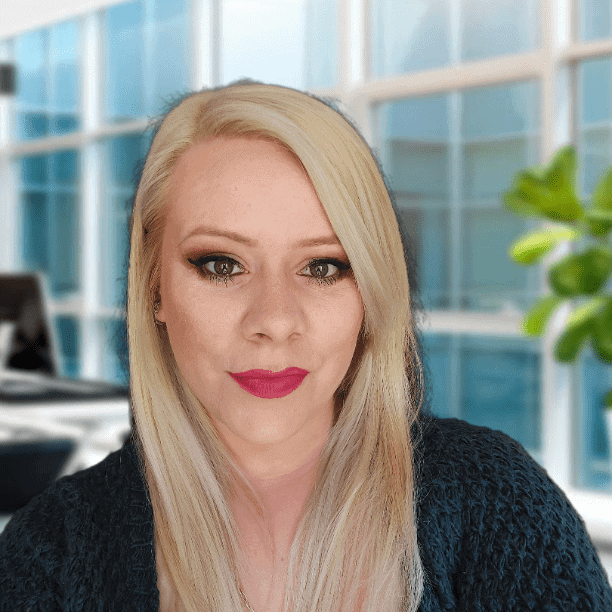
Neerja Ahuja is a pioneer of Ayurvedic education and practice in Australia. As the Founder and Director of the Ayurveda Awareness Centre (AAC), she has played a vital role in integrating this ancient science into Western healthcare since 1999. With a rich background in Ayurveda, Yoga Therapy, and holistic healing, Neerja blends Eastern wisdom with modern understanding, offering powerful guidance in wellness, emotional balance, and lifestyle transformation. As the first to establish a Registered Training Organization for Ayurveda in Australia, she has trained thousands—both in person and online across 135 countries. In this conversation with Mystic Mag, Neerja shares her journey, her passion for emotional and mental hygiene, and how true healing begins with awareness.
From starting a community awareness project in 1999 to becoming the Founding Chair of Ayurveda at ANTA, how has your vision for Ayurveda in Australia evolved over the years?
Over the years, my journey has evolved significantly. When I started out, I was actually a database programmer. My background—my first degree—is in mathematics, statistics, and computer programming. So, of course, this was not my original profession. This is my second career, which I’ve now been following for over 25 years.
At the time, I was taking a break from my programming career to raise my two young children. As an immigrant, I didn’t have family nearby to help, and I didn’t want my children to be in daycare. So, we made a family decision that I would stay home with them until the younger one started school. During that time, I focused on family and things that supported our growth.
I like to say: I didn’t choose this profession—it chose me. It was Divine Will.
Initially, I was running a single community programme. It was meant to be just one seminar, part of something called the Self-Expression and Leadership Programme. I had to create something that represented me as a leader, so I decided to run a community seminar. From there, things just grew. After that seminar, I was asked to run another, and then another, and soon it became a year-long course.
Eventually, we opened a clinic. My teacher, who had originally taught us, was based in South Africa, so he wasn’t physically present. He ran classes online—this was long before modern webcams and easy video calls. I remember our first video cameras cost $10,000 each, just to be able to run the classes. Even phone calls were expensive, so we had to be very careful about how we used our time.
My teacher would lead the main course sessions, and I would then review and facilitate the material with the participants. That’s how I became deeply involved—and I never went back to programming. The day my younger child started school was the very same day we opened the clinic.
That’s what I’ve been doing ever since. To be honest, it wasn’t the most financially rewarding decision—programmers earn far more than what you typically make in this field. There were times when I felt frustrated, though not often. My husband has always been extremely supportive. Even though he’s an engineer, we studied Ayurveda together, and he’s walked this path with me.
I had to keep reminding myself: this work was never about money. When we started, we had to spell out the word Ayurveda and explain what it meant. We’ve come a long way since then. While Ayurveda isn’t fully mainstream in Australia yet, it’s much more widely known now.
In fact, while we were still studying, we got involved in helping the government recognise Ayurveda as a legitimate health modality. Before that, there were no formal recognitions—we were simply practicing because we believed in it. We became part of the committee that developed the curriculum, and eventually, as Ayurveda gained recognition, we became a government-registered training organisation.
Although I’m not currently running those courses, we have led three-year and 18-month programmes in the past. As for vision—well, the vision has evolved over time. These days, I’m more focused on preventive health, which I believe is incredibly important. While Ayurveda is still not considered equal to Western medicine in many ways, it offers immense value.
One challenge has been that not many people were ready to commit to a three-year course in a field they hadn’t even heard of. So in recent years, I’ve shifted my focus slightly. Rather than offering formal qualifications, I now prefer to work with people who are genuinely interested in Ayurveda for their own wellbeing.
Ayurveda often requires adaptation when introduced in a Western context. How do you maintain the authenticity of its teachings while making them accessible and relevant to Australian audiences?
For relevance, it’s important to use language that is understood. But I feel good knowing that we don’t lose authenticity in the process. Even when adapting the language, especially when I’m teaching, we maintain the essence of what we’re sharing.
I’m currently running a one-year course, as well as shorter self-care courses. In our teaching, we use both Sanskrit and English terms. Some Sanskrit words simply have no direct English equivalent—you would need a whole paragraph to explain them. In those cases, of course, we teach the deeper context. But in general, I use both terms wherever necessary.
I think it’s vital to preserve the integrity of a science like Ayurveda, which is said to be over 40,000 years old in oral tradition, with written texts dating back 5,000 years or more. The context of life constantly changes. What brought stress to my parents or grandparents is not the same as what brings stress to me or my children.
But the fact remains: people experience stress. And when they do, certain things happen in the body. Stress affects digestion, heart rate, blood pressure—those physiological responses haven’t changed. Ayurveda addresses these fundamental laws of nature. That’s why its wisdom remains so relevant.
I often refer to the law of gravity in this context. Newton observed an apple falling from a tree and, being a scientist, asked why it fell. That led to his discovery and articulation of the law of gravity. But apples had always been falling—whether or not we had a name for the force. The law existed, waiting to be discovered.
Similarly, Ayurveda describes natural laws that govern physical, mental, and emotional well-being. These laws haven’t changed. What causes stress may differ from generation to generation, but the body’s response to stress has remained remarkably consistent. Our stomachs and digestion systems haven’t changed significantly—but our diets have.
So yes, Ayurveda is still deeply relevant. As long as we stay true to the soul of what we’re teaching, the core doesn’t change. However, depending on the context, the language does evolve. Words may change. Explanations may change. But the essence remains intact—and that’s what we aim to preserve in our teaching.
What type of services do you offer?
Like I mentioned earlier, we initially started with education, and then expanded into consultations. Over time, this has evolved—we now offer one-on-one consultations, education, and training. Our educational programmes are now primarily online. In the past, people used to fly in from different states and cities to attend in-person training, but now we conduct most of it virtually, including self-paced options.
However, my focus remains on LIVE training. Knowledge may be available on the internet, but it truly comes alive when we engage with it—when we participate, interact with the subject matter, and apply it in our own lives. It’s remarkable to see how much this has evolved. There have been times when we’ve had participants from four different continents and across six time zones. That in itself is a very enriching experience.
So, we now offer both self-paced and live online education. We also offer one-on-one consultations and classes. As a yoga therapist, I include yoga practices in my work, particularly Yoga Nidra sessions.
Additionally, we’re working on developing programmes focused on employee wellness. I’ve shifted my focus somewhat—from teaching nationally recognised courses to offering more targeted education for individuals who want to directly apply the knowledge in their lives. My one-year course is designed for people who are deeply interested in Ayurveda—either personally or professionally. Many participants are GPs or other health practitioners who want to integrate this knowledge into their existing practice.
So, our offerings include one-on-one consultations, education and training, yoga therapy—particularly Yoga Nidra—and now we’re starting to explore corporate wellness. This work is so relevant and practical. It’s preventative, requires no medication, and is rooted in diet, lifestyle, and self-awareness. It works very well, and we’re just beginning to roll it out.
I also now offer a membership programme. Often, it’s not that people don’t know what to do—it’s that they struggle to consistently do what they already know. I’ve found this to be true in my own life as well. So the membership is designed to create a sense of accountability and ongoing support, helping people stay on track with their well-being goals.
As someone who bridges the worlds of Ayurveda, yoga therapy, and education, how do you see the relationship between emotional hygiene and physical health in chronic disease management?
From a Vedic perspective, we’ve always understood that the mind and body are two sides of the same coin. This being—this human existence—is not just physical. It includes the mind, body, emotions, and even the spiritual aspect. We know this not only from spiritual teachings but also from everyday language. For example, when someone is stressed, they might say they feel “butterflies in the stomach.” That phrase alone reflects how emotions impact digestion.
Even science now supports what Ayurveda has known for thousands of years—that emotions can directly affect the body. When we’re stressed, we may experience indigestion, increased heart rate, or high blood pressure. These are physiological responses to emotional states. And because Ayurveda speaks about the laws of nature, much of this wisdom remains constant. What causes stress may differ from generation to generation, but the impact of stress on the body has not changed.
Ayurveda places great emphasis on emotional hygiene, because emotions influence physical health. Take emotional eating as an example. We don’t eat out of hunger—we eat because emotionally something is unsettled. Whether or not we need food becomes irrelevant. The mind is unanchored and seeks distraction or comfort, which leads us to the fridge or pantry.
If the mind were more balanced, we would not only recognize that we don’t need to eat, but we would also have the willpower to act accordingly. The mind gives the direction, and the body follows. The mind may say, “Eat healthy,” but if our emotions crave junk food or alcohol, we must first manage the mind before changing the habit. So, we must work on both—mind and body—together.
This is why I value tools like mantra, setting clear intentions, and practices like Panchakarma. These help us go beyond logic to remove mental and emotional toxins. When these are cleared, the soul—our inner wisdom—can guide us more effectively. We act in alignment with what we already know to be right. So, healing in Ayurveda always involves addressing both mental and physical aspects.
You can’t fully heal a physical disease without also addressing its emotional roots. Just as we know to maintain dental hygiene by brushing our teeth, we must also practice mental hygiene. Every day, we accumulate emotional “plaque”—thoughts, irritations, angers, frustrations. Unless we actively work to clear these, they build up and eventually manifest as illness.
In fact, mental hygiene is often even more important than physical hygiene. That’s why practices like meditation—where we cultivate stillness and observe our thoughts—are so essential. Through stillness, we can become spectators of our inner world and develop the will to change. This being is not just a physical body—it includes mind, body, senses, and soul. And unless we address all of these aspects together, we can’t truly heal.
That is the power of Ayurveda. Even now, I’m still in awe of the results I see with my patients and the experiences students share. I remain a student myself—constantly learning, constantly amazed. And I feel truly blessed to be part of this work. Simply being present during someone’s journey of transformation is deeply empowering. It has changed my own life.
I used to love my previous work as a computer programmer. It was creative in its own way. You’d speak to a client who needed a specific programme. At first, you had no idea how to build it, but through conversations, you’d understand their needs. Then, using your programming knowledge, you’d create something that turned their ideas into a functional system. It was a creative process that began in two people’s minds and ended in a working product.
I loved that work—but what I do now is on a different level. Here, I witness transformation in real people. I see how they shift, and with them, I shift too. I’m human as well, navigating the same mind, body, senses, and soul. And through the conversations I have with patients and students—their experiences, their healing—I grow. I feel privileged, more than anyone else, to witness and be part of their journeys.
Looking forward, what is your vision for how Ayurveda can further integrate into public health systems or education curricula in Australia and globally?
I believe what Ayurveda emphasizes about prevention is huge because, in the Western model, we are typically accustomed to going to doctors when we’re sick. However, there are often times when people feel something isn’t right before it becomes a major issue. If they do go to a doctor, the doctor might order tests—such as blood tests, liver tests, or others—and as long as the results come back within the normal range, doctors don’t usually provide any further action. That’s the typical approach in Western medicine.
In Ayurveda, however, we talk about six stages of disease, with the first four being subclinical. This means that, in the early stages, the symptoms may not be noticeable enough to diagnose, and even if someone gets tested, it might show up within the normal range. So, these early stages are subclinical, and Ayurveda teaches us that the first four stages of disease are subclinical, while stage five is when the disease becomes clinical and can be labelled as such. But before this, there are imbalances happening in the body that we can address.
If we’re aware of these imbalances, we can take preventive measures. Prevention requires discipline, and we can often reverse what’s happening. This is similar to the concept of the four quadrants—important but not urgent. Prevention is in that “important but not urgent” quadrant, and this is the best place to focus on. In businesses, we’re not in firefighting mode if we are dealing with things that are important but not urgent. Similarly, in health, we focus on prevention before it becomes an urgent issue.
I think, especially in the Western world, there’s a need to focus more on prevention. It’s important everywhere, but when I was growing up, the importance of prevention was widely known, especially among women. They were the health ministers of the home. They knew what to give for stomach pains, colds, coughs, and other small illnesses. This is the kind of preventative knowledge we used to have, and I think it’s crucial to bring that back.
That’s why I’m passionate about this work. As chair of the Australian Natural Therapists Association, I’m lobbying for Ayurveda to be included as a unit of education in natural health. Additionally, I’m focusing on employee wellness programs, where we address corporate wellness. There’s a growing interest in integrative medicine, and I believe that as more people request these kinds of practices, the law will follow. Many people are already seeking out natural health practitioners, yoga, meditation, and other alternative healing methods.
In fact, I’ve had many patients in the medical field—nurses, doctors, and other healthcare professionals—seek my services. Of course, not every medical professional is open to the practices we use, but there are plenty who are interested in integrated medicine. I believe it’s important to make Ayurveda more widely known because it has so much potential to help with prevention. If we maintain the integrity of what has kept Ayurveda relevant for thousands of years, we can do a lot of work in this area.
I’m not suggesting that Ayurveda should replace Western medicine, but rather complement it. We can’t completely dismiss the need for tablets or Ayurvedic herbs when necessary, but I practice in a Western context where my legal boundaries are different from those of a medical doctor. Nevertheless, there’s still a lot we can do in terms of prevention. Ayurveda’s strength lies in its preventive approach, and I believe that working together—without conflict—can produce great results.
For chronic conditions, diet and lifestyle practices are incredibly effective. Yoga and Yoga Nidra, along with other components, can be extremely helpful, especially for chronic issues. However, for acute conditions or emergencies, I would absolutely recommend going to a doctor or the hospital. If there’s an accident, you want to be taken to the hospital, not rely solely on an ayurveda practitioner.
This is why I believe there’s a place for everything. Ayurveda’s strength lies in its holistic approach, and in areas like cardiology and diabetes, there’s already a huge focus on diet and lifestyle. Why wait until something goes wrong when we can address these issues early? By working on diet, lifestyle, and removing toxins—whether physical, emotional, or mental—we can prevent illness from occurring in the first place. Anger, sadness, and irritability are all forms of mental and emotional toxins, and by addressing these, we can unlock our true potential.
Ayurveda is not just about surviving life but thriving. When we focus on our physical, mental, and emotional well-being, we are anchored in a state of peace and well-being. This allows us to think clearly and focus on what truly matters in our lives. Ayurveda helps unlock our potential, not just by normalizing blood tests but by helping us live more fully. The Sanskrit word for health in Ayurveda is “Svastha,” which means “to stand in oneself.” This is the state of being when we are truly aligned with who we are.
As a practitioner, I don’t have to copy anyone else’s path. My job is to see what context people are in and how I can best present Ayurveda to them. I don’t need to dump all the knowledge I’ve accumulated over the past 25 years in one session. Instead, I focus on what the person needs and provide the information that will give them the results they’re looking for. If they become curious, I can guide them to further education on the subject.
Ayurveda empowers people to take charge of their own well-being, and that’s what I strive to offer—knowledge and tools to live a healthier, more fulfilled life.



